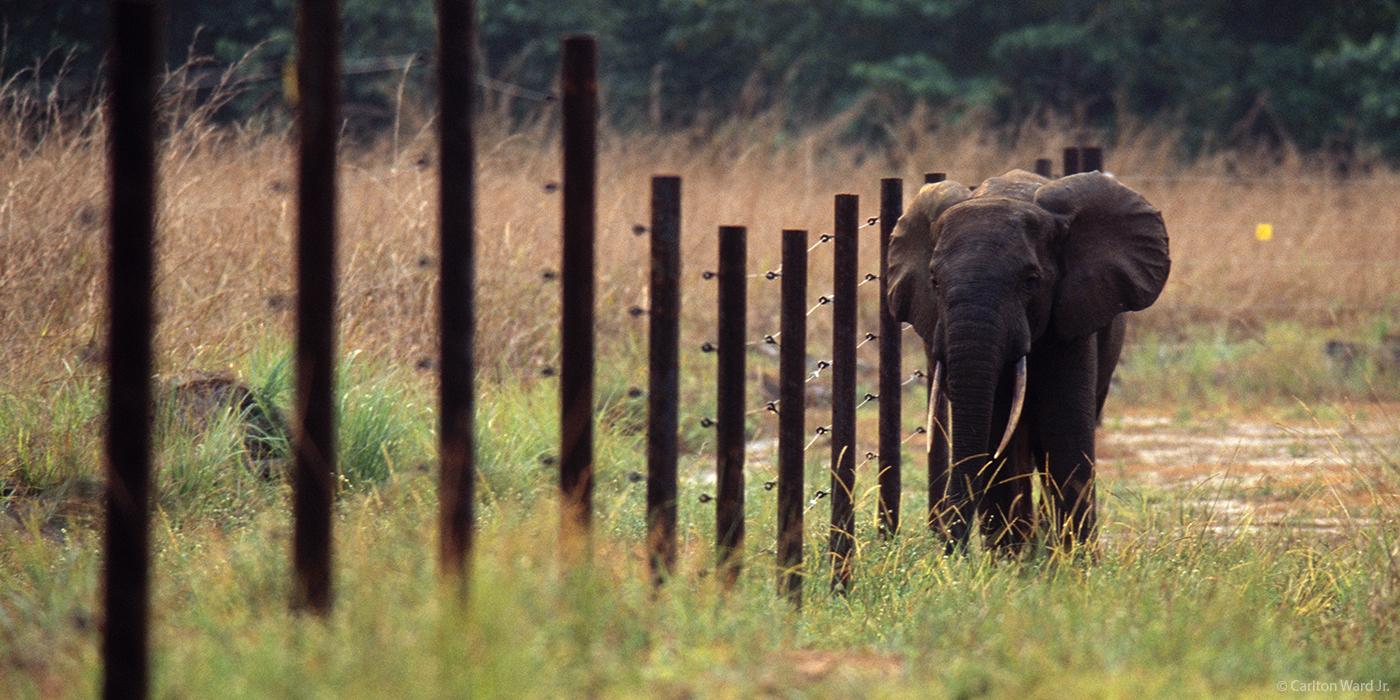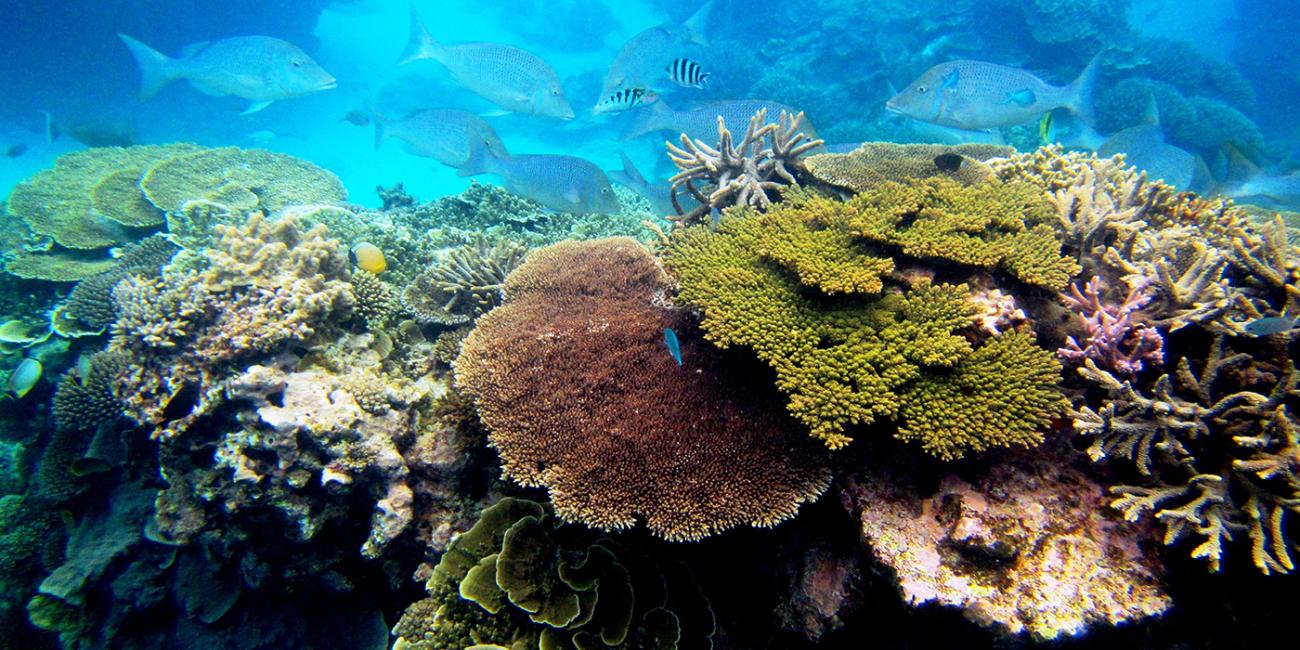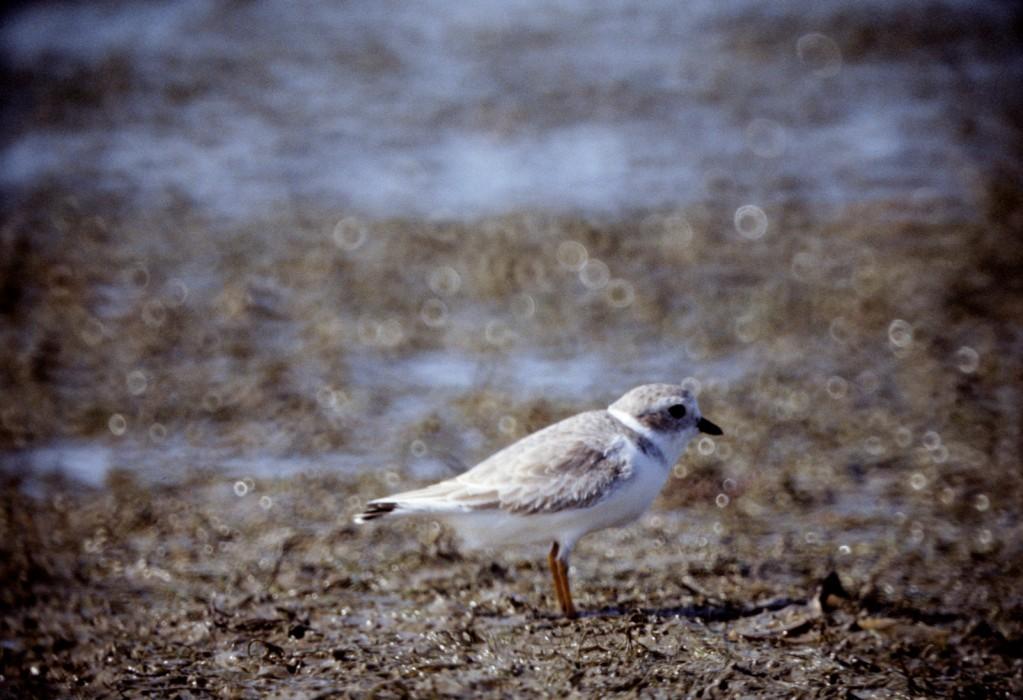Working with Industry to Conserve African Forests
Gabon is part of the Congo Basin, the world's second-largest rainforest after the Amazon. The country lies on the equator, and 85% of its land is covered with tropical forest. It is rich in biodiversity, with species found nowhere else in the world. However, more than half of Gabon's forest is allocated for forestry development, with mining and agro-industrial expansion also planned. For two decades, the Center for Conservation and Sustainability has led the Gabon Biodiversity Program, which establishes science-based solutions and creative partnerships to protect Gabon's forests.
Gabon Biodiversity Program
The Gabon Biodiversity Program operates from the Gamba Complex of Protected Areas in southwest Gabon — an area containing two national parks, Ramsar sites (wetlands of international importance) and a marine protected area. The Gamba Complex is internationally known for its biodiversity and varied habitats, both terrestrial and aquatic. It harbors critically endangered species, including forest elephants and western gorillas, as well as threatened and protected species, such as sea turtles and chimpanzees. Yet, the Gamba Complex is also the center of Gabon's onshore oil production and contains Forest Stewardship Council certified logging concessions (areas designated for low-impact, selective logging). On its periphery, there are also certified sustainable palm oil operations.
Located in the middle of the Gamba Complex between two national parks is the “industrial corridor,” a site of overlapping oil and logging concessions. The industrial corridor is also an important wildlife corridor, where animals move between habitats. Preserving this area protects its role as a wildlife refuge, helps to keep habitats connected, and maintains the ecosystem services that people depend on. Through the Gabon Biodiversity Program, scientists conduct research, conservation, and outreach in collaboration with the government, private sector and local community organizations. The program contributes to biodiversity conservation by:
- Creating best practices to minimize the environmental impact of industrial development
- Offering training and sharing knowledge to increase capacity for environmental management
- Highlighting the importance of ecosystem services, and the link between environmental health and human well-being
- Building collaborative, productive relationships with stakeholders
Program Focus Areas
Working in the presence of elephants
The Gamba Complex is brimming with wildlife, including a large population of critically endangered forest elephants. These forest architects roam through industrial concessions and infrastructure, where sudden encounters between humans and elephants can pose a risk. Researchers use camera traps (automated cameras triggered by animal movements) to monitor the presence of elephants near an oil terminal (where oil is stored and processed) and a residential camp where oil workers live. Researchers share the information they collect with company operators and contractors, and then advise them about behaviors that can minimize risk around elephants. Because elephants can be attracted by human food waste, researchers also test best practices for waste management.
Understanding forest dynamics
In addition to charismatic megafauna (large animals with popular appeal), the forests of the Gamba Complex sustain a variety of majestic trees. In 2010, scientists began a research project in a forest near Rabi, the site of a large oil field within the industrial corridor. In an area the size of a football field (25 hectares), scientists mapped, tagged, measured and identified all trees with diameters greater than 1 centimeter at breast height. They found more than 175,000 trees representing about 345 species. The information was collected following the protocols of ForestGEO, a worldwide network of forest monitoring sites.
Scientists found that more than 2,000 of the small-diameter saplings died within one year, indicating that there is a very high turnover of young trees. They have also used the data to estimate carbon stored in the above-ground biomass (the total mass of trees and shrubs, both alive and dead). In addition, they discovered several new species of plants and fungi. Scientists measured the existing trees and newly sprouted saplings again and are in the process of completing data analysis to assess tree growth rates.
Monitoring human impact
Researchers monitor 39 square miles (101 square kilometers) of concessions for signs of human activity. Concessions are areas designated for different forms of exploitation, such as oil and gas exploration or logging. The researchers work closely with government wildlife rangers, who dismantle and destroy all illegal traps found, such as wire snares. Illegal traps are a danger not only to wildlife but also to people. During their assessments, researchers also record disturbances such as illegal logging, discarded gun cartridge cases (evidence of hunting), waste dumping, quarrying, land clearing and other prohibited activities. Issues are reported to the concession managers for follow-up. Mitigating human impact helps ensure these concession areas maintain their ecological integrity — the ecosystem’s ability to support its community of organisms.
Reducing deforestation
In recent years, forest clearing for slash-and-burn agriculture has been the main cause of deforestation in the southern Gamba Complex. The area’s poor sandy soils can only support crops for a couple years. Once an area’s soil is depleted, farmers move and clear a new area of forest, burning the wood so the ash fertilizes the soil. Scientists set up experiments to see if it was possible to cultivate cassava, a local crop, in the sandy soils of grassy plains rather than forests. If successful, this could reduce the need to clear trees for crops. Scientists tested whether sustainable soil additives, such as compost and biochar (alone and in combination), could improve crop yields. Results showed that both the number and weight of cassava tubers increased in experimental sites when compared to control sites. Sustainable agricultural methods like these could slow the rate of deforestation by allowing farmers to cultivate one area over a longer period of time.
Understanding the socioeconomics of slash-and-burn agriculture
Researchers have started a social science initiative to understand the socioeconomic dynamics of current slash-and-burn agriculture. They are gaining insights into the economic and cultural importance of existing farming practices by interviewing farmers and stakeholders, and by developing a Theory of Change. A Theory of Change is a decision support tool that describes the causal links and sequence of events that lead from an action to a desired outcome. In this case, the desired outcome is to reduce deforestation due to slash-and-burn agriculture. This research will help develop economic farming alternatives that are both sustainable and aligned with local priorities.
Managing a biodiversity collection
Scientists documented the biodiversity found in the Gamba Complex and collected specimens for research, training and education. The collection of more 120,000 specimens (mostly insects) has been used by research specialists in plants, insects, fishes, amphibians, reptiles, birds and mammals. The specimens on display are also used for education. Researchers lead guided tours for schoolchildren, local workers and visiting tourists. The tours introduce people to the unique natural history of Gabon's Gamba Complex. The specimen collection is managed using standard operating procedures to ensure it remains a valuable resource for future generations.
Educating schoolchildren
While the Gamba Complex supports a variety of wildlife, schoolchildren may have little direct experience with their local biodiversity. The Gabon Biodiversity Program includes a series of classes for grade 5 students at four local public primary schools. Students learn about biodiversity and the need to care for the natural world and its life-supporting systems, while gaining enthusiasm for the environment. Lectures focus on local biodiversity, ecosystem services, and solutions to threats to wildlife and the planet. The classes aim to foster environmentally responsible managers of the future.













